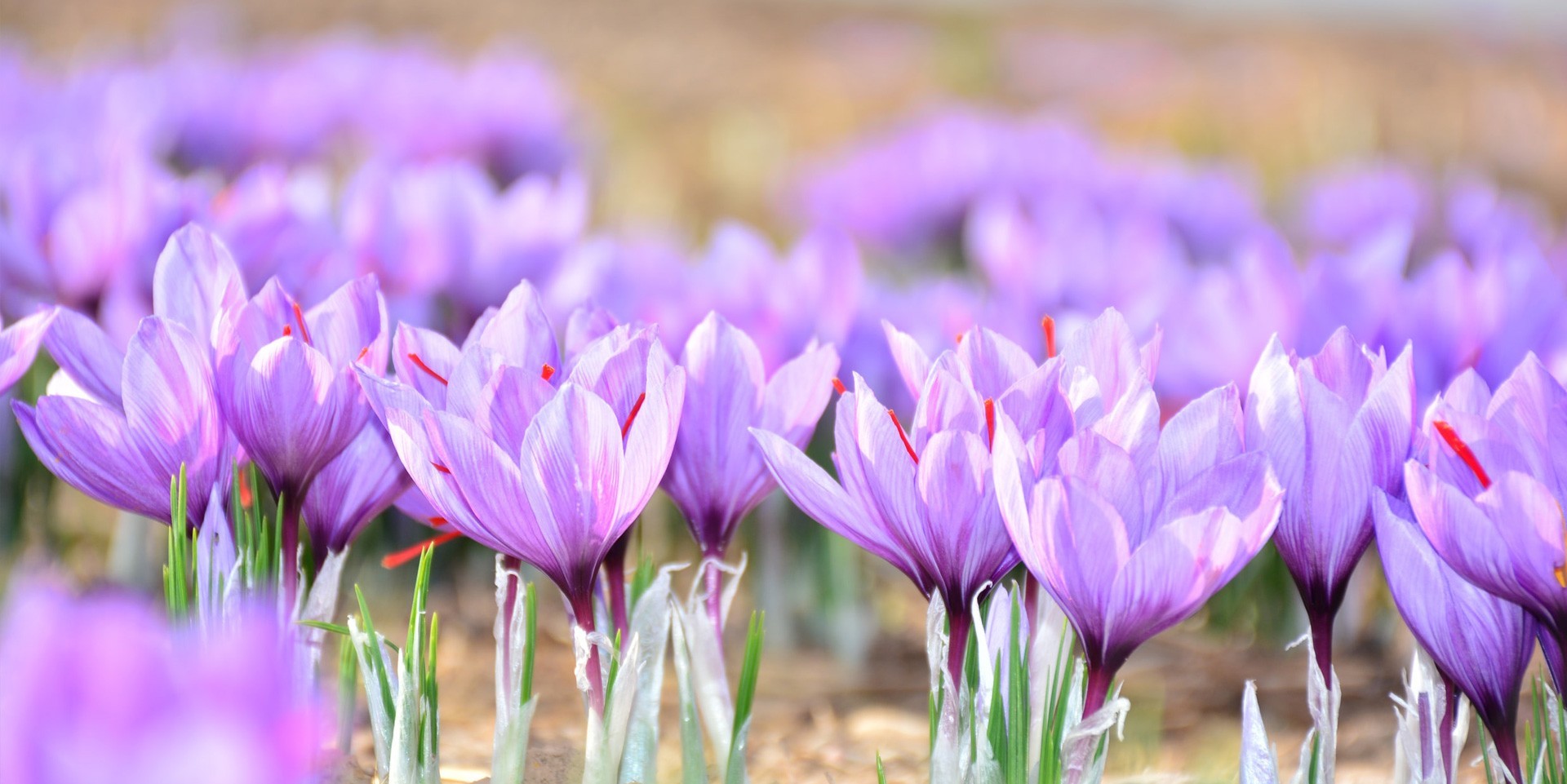To cook saffron (as when growing it), the catchword is ’patience’.
The golden rule for saffron is to infuse it in advance. An infusion time of 1 to 4 hours may suffice, but when possible, your infusions can be prepared the day before, 24 hours being the ideal brewing time. By its chemical nature, it is not part of the instant spices. It needs time to release its mesmerizing flavor. It colors almost immediately but gradually reveals its inimitable aroma. The more time it is given to open up, the better it will express itself. Thus infused, the color and flavor will be better distributed throughout the dish.
It takes 1 to 3 pistils (3 to 9 strands) per serving when making a recipe, depending on whether it is cooked in something sweet or salty (see recommended amounts below). Any liquid may be suitable for brewing (infusing the saffron) but the result is optimized when the liquid is slightly acidic. Alcohol speeds up coloring. Excellent infusions can be made with white wine, lemon juice, champagne, broth, egg white, vinegar, fish stock, milk or cream, fruit juice or vegetables. A little lukewarm water will also do.
You should incorporate the infused saffron into your recipe at the end of cooking. It is necessary to avoid cooking for a long time; the ideal cooking time is around 20 minutes. For slow-cooked dishes, it should be added at the last 15 minutes of cooking time. Frying and prolonged boiling should not be done with saffron as the intense heat destroys its aromatic molecules and leaves only the dye.
Quantités recommandées
Amounts given are based on the taste qualities of our saffron at ‘Pure Saffron’. Depending upon the origin, quality and age of saffron from other providers, you may have to use up to 10 times the amount indicated to achieve the same result.
For sweet dishes and tea; 1 pistil per serving (3 sprigs)
For savoury dishes, paella, mussels and seafood; 2 pistils per serving (6 sprigs)
For sauces; 1 to 2 pistils per serving (3 to 6 sprigs)
In rice and pasta; 4 to 5 pistils per 250g (12 to 15 sprigs)
In desserts, breads and pastries; 1 pistil per serving (3 sprigs)
In jams; 15 pistils per kilogram of fruit (45 sprigs)

